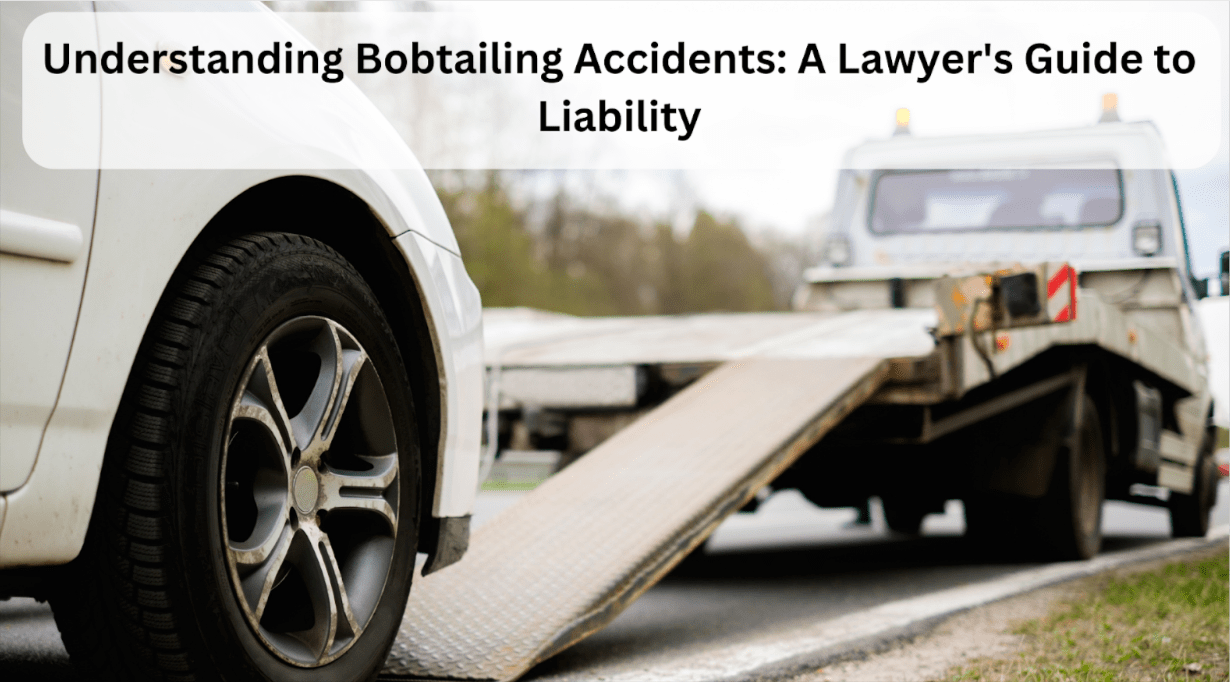
Bobtail trucks are a common sight on roads across America, and their frequent involvement in roadway accidents each year underscores a critical aspect of trucking safety. To comprehend the risks posed by these vehicles, we must first understand their unique dynamics.
Overview of Bobtailing in the Trucking Industry
In the trucking industry, bobtailing refers to operating a tractor without an attached trailer. Bobtail trucks have distinct characteristics that impact braking, handling, and accident liability.
“Deadheading” also means operating without a load, but bobtailing specifically implies short-distance travel between loads or to the home base. When bobtailing, the driver may be commuting between a drop-off work and another job pick-up. It may also mean that the driver has dropped the caravan off at one spot. Then, they travel home before picking it up again the next day.
Whichever the case, the driver must proceed with extra caution to prevent collisions. It can be even more challenging if the driver is already fatigued from a long day of driving. It can also be difficult when they’re used to towing a trailer. One of the primary challenges with bobtailing is that the vehicle cannot brake as effectively. This is because the grip on the back wheels is more reduced so the truck needs a longer distance to stop.
According to the FMCSA, bobtail vehicles are a part of 5% of truck accidents every year. It might not seem like a lot, but it amounts to 248 fatal collisions and over 2,500 accidents. Therefore, more assistance is needed from accident injury lawyers to obtain compensation. With bobtail trucks involved in many annual U.S. road accidents, understanding this practice is essential.
The Mechanics of Bobtailing and Associated Risks
A bobtail tractor’s weight distribution differs markedly from a loaded truck. With the weight towards the front and no trailer brakes, bobtails need 20-40% more stopping distance. It is especially dangerous in wet or icy conditions.
Sudden braking transfers weight forward. It reduces the friction of drive wheels and increases the stopping distance further. This makes bobtails more prone to brake failure and loss of control. In effect, accident risks are heightened. If impacted, those injured would benefit from consulting a truck accident lawyer in SC to understand their rights and liability options. They may obtain compensation and everything that should be granted within their rights.
In comparison, loaded semi-trucks are easier to control and stop due to their more even weight distribution and the presence of extra trailer brakes. But they need greater caution in applying brakes to avoid trailer swings or jackknifes.
Legal and Regulatory Framework Governing Bobtailing
The Federal Motor Carrier Safety Administration (FMCSA) governs commercial trucking operations. It implements complex regulations under the Commercial Motor Vehicle Safety Act of 1986. All truck drivers and carriers must follow limits on driving times and mandatory break periods.
The FMCSA’s 2020 revised Hours of Service regulations for property-carrying commercial drivers dictate:
- 11 cumulative driving hours permitted during 14 hours after coming on duty
- Mandatory 30-minute rest break after 8 consecutive hours of driving to restart the clock
- 10-hour minimum off-duty period between 14-hour driving windows
These strict federal rules also encompass bobtail truck operations. Along with it are extra FMCSA Commercial Driver’s License (CDL) program stipulations on:
- Medical certification
- Drug testing
- Inspection/maintenance
Violating any FMCSA regulations has serious implications for drivers and motor carriers. This includes hefty fines, license suspensions, and criminal charges. Out-of-service orders can also be issued for non-compliance.
Bobtail trucks are inherently more prone to accidents due to their mechanics. But extreme caution is mandatory when bobtailing. Exceeding driving hour limits, skipping inspections, or operating unsafe equipment violates federal regulations. In effect, it substantially increases liability if an accident occurs. The legal responsibilities of drivers and carriers are increased due to the risks posed by bobtails.
Case Studies and Legal Precedents
There have been various lawsuits emerging from bobtail truck accidents. It is where plaintiffs allege regulatory non-compliance. Recent verdicts establish legal precedent on the liability of drivers and motor carriers:
Davidson County, Tennessee (2021)
A tractor-trailer operator was found liable for a fatal crash. It involved a company truck driver illegally operating a bobtail rig out-of-hours. Though off-duty, the court ruled the carrier failed to adequately train and supervise the driver on safety protocols.
Cook County, Illinois (2019)
A carrier was ordered to pay $11 million to an injured motorist after its driver crashed a bobtail tractor-trailer with faulty brakes. Investigations revealed lax maintenance processes that violated FMCSA inspection policies.
Sacramento County, California (2017)
Both the driver and carrier faced criminal negligence charges. This is after a tired trucker caused a major bobtail accident by violating the 10-hour mandatory break rule under Hours of Service limits.
These cases illustrate the enormous legal liability companies may face. It is not recommended to permit the poorly trained, non-compliant, or negligent driving of bobtail trucks. Tractor-trailers are involved in nearly 75% of all fatal large truck crashes. Carriers must put in place comprehensive safety programs, even for bobtailing. Strict federal regulations set a crucial framework for liability.
Preventative Measures and Best Practices
To reduce bobtailing’s risks, drivers must:
- Maintain slower speeds for increased control
- Avoid sudden braking by allowing a longer stopping distance
- Equip tractors with safety accessories like spray suppression mud flaps
The following distance is critical. Leaving ample room to brake gradually prevents chain-reaction collisions.
Industry groups and advocacy organizations can conduct public awareness campaigns to encourage cautious driving behavior around bobtail trucks.
FAQs
What legal duties exist to prevent bobtail accidents?
The FMCSA’s regulations impose legal duties on carriers and drivers to mitigate accident risks. Violations may increase liability in crashes.
How does bobtailing impact insurance liability?
Insurers can deny coverage if the trucks were improperly operated or maintained. This depends on company policy or regulations. Plaintiffs may also target driver and carrier policies.
What should accident victims do to ensure fair compensation?
Consulting specialized truck accident attorneys ensures victims receive due compensation. They can build strong legal cases drawing on regulatory non-compliance and liability precedents.
Takeaway
To gain a comprehensive understanding of bobtailing liability, it’s essential to explore the following aspects:
- Regulations
- Case studies
- Insurance implications
- Preventative strategies through a legal lens
Despite the risks involved, implementing best practices can help reduce accidents and safeguard others sharing the road with bobtail trucks.



